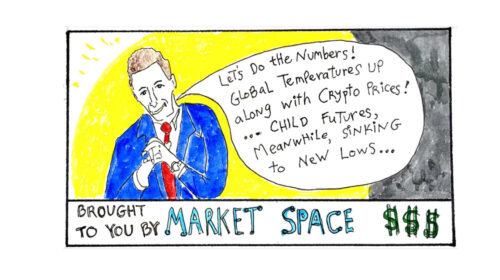Economics

CryptoCare©
Perhaps you’re curious to know—just hypothetically–how far the current value of global cryptocurrency could go toward increasing the supply of child care in the U.S.
In Defense of Valuation
I think that estimates of the market value of non-market work are a worthwhile exercise (as my last two posts suggest) as long as they are done carefully and presented as an approximate lower-bound. But conceptual resistance to valuation remains remarkably fierce–which is a big reason we don’t see more of it.
The Temporal Constraints of Child Care
Fortunately, the American Time Use Survey includes a question that asked respondents to indicate times when a child under the age of 13 was “in your care.” This makes it possible to measure the amount of time devoted to supervisory child care.
The Dollar Value of Grown-Up Care
Work is no less valuable if it’s fun (I’m working for fun right now).
All the Child Care Workers in the USA
All the child care workers in the U.S. combined earn less than the top 25 hedge fund managers and traders. Wow. Even a jaded old care-work researcher like me finds this pretty startling.
Care and the Great Transition
Because I think there are fundamental similarities between care and ecological services, I look for opportunities for dialogue with environmental researchers and activists.
Recovering from the NYT
I started this blog in 2008, but soon let it lapse as I became an almost–weekly contributor to the New York Times Economix blog from 2009 to 2014. This felt pretty demanding on top of my regular job and I needed a while to recover and reconfigure.
What is She Worth? How to Value (Or Not to Value) a Woman’s Life
The 9/11 Victims Compensation Fund dispensed death benefits for female victims that averaged only 63% of those for male victims. Why? Special Master Kenneth Feinberg was instructed to use a formula similar to that used in U.S. courts, taking victims’ estimated future earnings into account. For more details, see his fascinating book, What is Life Worth? (Public Affairs, 1995).
Is it Work?
Steven J. Dubner and Steve Levitt suggest the following: “It’s work if someone else tells you to do it, and leisure if you choose to do it yourself.” This definition makes it sound like neither self-employed nor self-motivated individuals do any work.
Children as Pets
This recent New Yorker cover satirizes the notion that children, like puppies in a store window, are just another consumer good. I think the gender stereotyping is intended as a joke, though not all viewers would take it that way.
Measuring Progress
I’m in Paris for a meeting of a new Commission on the Measurement of Economic Performance and Social Progress. It’s a city that invites reflections on the past that can make the future shimmer. Walking down the Rue des Francs Bourgeois in the Marais I recall an essay contest sponsored by a group of learned French scholars in 1759. They asked, “Has intellectual and economic progress contributed to the moral improvement of humanity?” The winner, Jean-Jacques Rousseau (smiling enigmatically on the left), elaborated famously on his basic answer: non!
When a Commodity is Not Exactly a Commodity
Every week, the journal Science complements its published articles with one or more “Perspectives” offering a brief and informal summary of research on an important topic. I was thrilled to be invited to submit one of these recently, and chose to focus on the impact of personal interactions and emotional connections on the economics of care services.